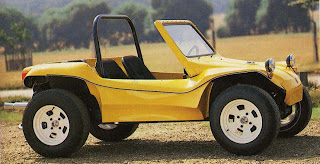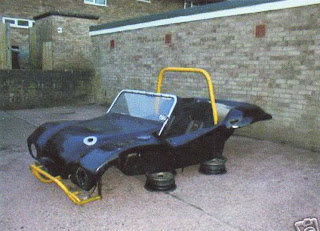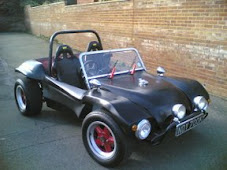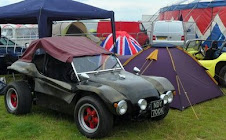My two half’s of a short block sat in half on my work bench containing many gears rods , bearings and I could see even as a layman that there where some nasty marks on the crankshaft bearing shells.
Several Beers later and a few hundred phone calls revealed a company in Tonbridge Kent, Hodson Engineering, Gazza Trading Estate. My first visit to this place bought back heady memories of the lathes, milling machines and machinery that was in our technical block at Angley Cranbrook. Every wall was occupied and this was truly an old engineering company with many specialised skills.
I soon had the information i needed to obtain from them about the engine, that told me that it could be rebuilt.
The end float was approx .04 inch + or - inch in free play with three shims fitted, I was talking like an engineer even though I could not utilise the information myself. My crankshaft, seals, shims, gaskets and flywheel where all taken up to Hodsons and left for two weeks. During the two weeks the crankshaft was reground to fit the oversized shims and the flywheel was balanced. The whole process was completed and a telephone call was made asking me to collect it.
My parts arrived home in a brown cardboard box. The crankshaft was taped together and had been reground and the seals, gaskets and shells had been fitted. It was a lovely sight all clean and polished. I had bought new piston rods and bearings and these where soon greased and fitted onto the crankshaft. The whole lot was then inserted into one half of the engine casing and the hot cam and shells where replaced as where the tappet followers. I remembered to get some of the hematite case sealant and a couple of days later my short block was back together.
The transplant was a success. The crankshaft was rock solid in its bearings and the engineering company had done a wonderful job for £30.00.
Two half's of an engine and a packet of shims
Engine Meltdown
My engine that was looking so nice after the rebuild. It had lost the oil drain plug down the A21 in Kent. There was a little black line trailing off down the road a couple of 100 ft or so and it had stoped just before the flimwell traffic lights. It was a complete mess. It would turn over via the ignition key and starter but let out horrible grinding noises when it was turning and would not start.
The first thing to decide was whether to buy a replacement or rebuild the entire long block. After various discussions with GP Beach Buggies, it was made clear that keeping the same engine made getting the car through the DVLA and V5 issues much easier as more of the car still remained.
The engine was stripped down and was soon down to the short block , removing the fan housing Carburretor, heads and cylinder heads was much easier than I thought with the engine sitting on a work bench. My boxes of engine parts started to increase and I was slowley running out of coffee jars and plastic pots. The pistons and barrels appeared to have not suffered at all and the cylinder heads where leaded heads which I was going to replace any way with unleaded ones.
The short block on a VW engine is made of Aluminium and can just about be carried by a single man, I must confess this is possible but not advisable. I split the case in two revealing the problems that loosing oil from an engine at high speed can cause.
Would my short block repairable?
The first thing to decide was whether to buy a replacement or rebuild the entire long block. After various discussions with GP Beach Buggies, it was made clear that keeping the same engine made getting the car through the DVLA and V5 issues much easier as more of the car still remained.
The engine was stripped down and was soon down to the short block , removing the fan housing Carburretor, heads and cylinder heads was much easier than I thought with the engine sitting on a work bench. My boxes of engine parts started to increase and I was slowley running out of coffee jars and plastic pots. The pistons and barrels appeared to have not suffered at all and the cylinder heads where leaded heads which I was going to replace any way with unleaded ones.
The short block on a VW engine is made of Aluminium and can just about be carried by a single man, I must confess this is possible but not advisable. I split the case in two revealing the problems that loosing oil from an engine at high speed can cause.
Would my short block repairable?
Chassis preperation
9th June 1990
GP Beach Buggies in Isleworth were a lovely small company manufacturing the GP Beach buggy shells and preparing chassis to ensure they would fit the bodywork. GP Buggies have sadly moved on and the moulds and associated company assets have all now moved on else where. The Chassis preparation work took a week to do and cost £287.50 back then and the invoice was hand written on a lined pad. Mr G Bradley performed the preparation . The anticipation of bringing it home was amazing. The chassis was returned home on my girlfriends Nova 1.2 and my fathers boat roof bars. It took four men to lift it back up and 4pm one summer evening in 1985 the chassis was returned to the garage.
I spent the next few months in the garage with my father and small B&D dremel removing the rust from the parts that where rusty. This soon became a chore and I realized that something larger was required to do the cleaning. I located some sand blasting equipment for hire from a company in Heathfield, Kent called strangely Heathfield Hire. I arranged to have the equipment one weekend and bought two large bags of blasting grit. All systems where go! The blaster had power from the mains and water from a hose and a bag of course grit attached to its feed. The blaster was turned on and we braced ourselves for the blaster to leap into life. NOTHING Hmm typical for hire machinery. Two fuses and a trip into the workshop later the sandblaster was eventually cleaning down the rusty metal. One thing we had not anticipated was that we would be finding this grit everywhere for the next five years.
Several tins of boat paint top coat primer and red oxide later my chassis was looking very colourful and hopefully the expensive paint would keep the majority of the rust away.

GP Beach Buggies in Isleworth were a lovely small company manufacturing the GP Beach buggy shells and preparing chassis to ensure they would fit the bodywork. GP Buggies have sadly moved on and the moulds and associated company assets have all now moved on else where. The Chassis preparation work took a week to do and cost £287.50 back then and the invoice was hand written on a lined pad. Mr G Bradley performed the preparation . The anticipation of bringing it home was amazing. The chassis was returned home on my girlfriends Nova 1.2 and my fathers boat roof bars. It took four men to lift it back up and 4pm one summer evening in 1985 the chassis was returned to the garage.
I spent the next few months in the garage with my father and small B&D dremel removing the rust from the parts that where rusty. This soon became a chore and I realized that something larger was required to do the cleaning. I located some sand blasting equipment for hire from a company in Heathfield, Kent called strangely Heathfield Hire. I arranged to have the equipment one weekend and bought two large bags of blasting grit. All systems where go! The blaster had power from the mains and water from a hose and a bag of course grit attached to its feed. The blaster was turned on and we braced ourselves for the blaster to leap into life. NOTHING Hmm typical for hire machinery. Two fuses and a trip into the workshop later the sandblaster was eventually cleaning down the rusty metal. One thing we had not anticipated was that we would be finding this grit everywhere for the next five years.
Several tins of boat paint top coat primer and red oxide later my chassis was looking very colourful and hopefully the expensive paint would keep the majority of the rust away.
Subscribe to:
Posts (Atom)


















